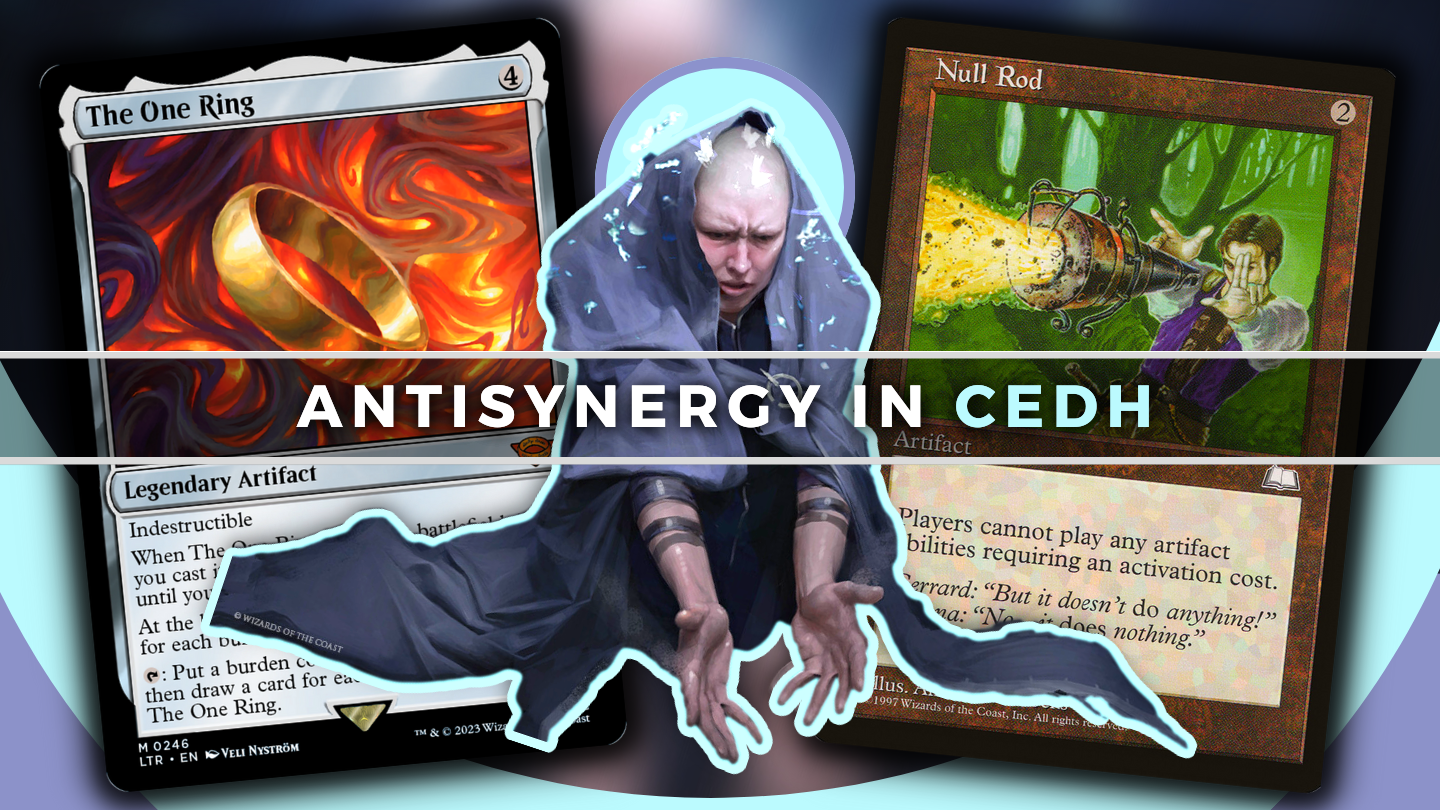Antisynergy in cEDH

Overall, it's safe to say people build decks by grouping 100 cards together because they make each other work better. Synergy. Building a storm deck? Chances are you'll run rituals to chain into. Building stax? Odds are you'll want to double check your stock of Rule of Law
But what about when we chose cards that make no sense together? The One Ring
So, two powerful cards. The question remains: is my decklist big enough for the two of them? Welcome to the wonderful world of antisynergy, where good cards abound... but sometimes at the cost of each other.
Offensive Picks
First off, everyone's favourite thing to talk about: good cards! These are the cards we play because they're powerful, they work well together in our lists, and they advance our gameplan. I don't mean they advance us comparatively: I mean these cards take a step towards furthering our goals faster than our opponents can stop us. These aren't necessarily the linchpins of our decks; taking them out would make the list worse, but not unplayable. Let's turn back to The One Ring
The One Ring
It may seem intuitive, but it's actually really important to remember that playing good cards often makes decks better. Sure, a pile of 100 independently good cards is almost certainly worse than a pile of 95-or-so synergistic cards and 5 value pieces (don't quote me on these exact numbers), but having top-deckable threats presents an out when things go wrong and all your synergy pieces can't line up together. Rituals are great when you're chaining into an Ad Nauseam
Defensive Picks
As for defensive picks, we've already gotten the ball rolling on good ol' Null Rod
Cards like Null Rod
These silver bullets also suffer from the problem of probability: how likely are you to both play against an opponent who suffers asymmetrically from their effect, while also playing a game where you draw into them? The result is a valuation dilemma with three counterbalancing factors (prevalence of their intended target in the meta, repercussions on your own gameplan, and reliability of deployment per game), each of which must be weighed against the opportunity cost which is using the slot for a card which, while potentially weaker, serves to synergize with the rest of your list. Going back to Null Rod
First, the best use-case. These are the lists which play green (maybe red and black as well, if you really want to add all the possible sources of nonartifact mana) and seek to reign supreme in mana production via an army of dorks after Null Rod
Next, the worst use-case. These lists definitely don't play green, and odds are they are some variation of blue/blue-black/blue-white. Every opportunity for ramp in these lists comes from a rock, and even though you can tutor Null Rod
Balancing the Two
We've talked about offensive cards, like The One Ring
These two cards are the pinnacle of the antisynergy problem: one completely shuts off the other, no questions about it. So, how does the risk of running both stack up to the bonuses they each seek to offer? Let's look at this through the defensive opportunity cost calculation from before.
First, prevalence. This part doesn't apply as much to the antisynergy dilemma, as the question is more self-contained to your own list. Null Rod
Alright, with the quantity/prevalence question out of the way, on to repercussions. This is the big one. We've already set our definition for cards like The One Ring
Finally, it's time to talk statistics: more specifically, the likelihood of us seeing both cards in a the same game. Thankfully, unless we use a mass draw effect, odds are we won't see both even if they are in the same list. Once we draw one, we almost certainly won't be tutoring for the other. We aren't using Fabricate
Wrapping Up
Ultimately, the balance between offensive and defensive picks comes down to the severity of their antisynergy. Some will work with others, just not at peak efficiently, while others (like our pair from before) will absolutely crush any hopes of using their counteracting agent. In a singleton format like cEDH - primed with variety - there is undoubtedly room for experimenting with cards that make each other worse, but which cards you use for this is heavily dependent on how much you want to incorporate either into your strategy. I know I like drawing cards more than shutting off mana, that's for sure, so I encourage you all to double check to cross compatibles. Sometimes you might be surprised.